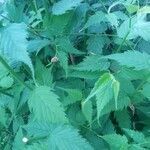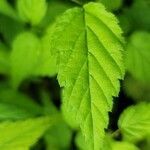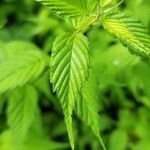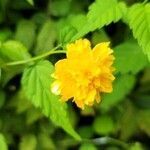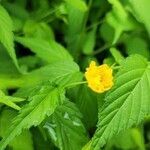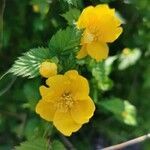Stems moderately flexuous. Leaves: stipules 1.5–2.5 mm; petiole channeled, 3–6(–9) mm; blade bicolored, (2–)3–6(–8.5) × (1–)1.5–3(–3.7) cm, base broadly cuneate to subcordate, proximal margins finely gland-tipped serrulate, ± plicate between impressed veins, apex long-acuminate, hairs 0.3–0.5 mm. Pedicels 5–22 mm, glabrous. Flowers: sepal margins entire, scarious, sometimes serrulate or glandular-fimbriate, apex acuminate, surfaces glabrous; petals (9–)17–25 × (2–)12–15 mm, claws 1–2 mm (innermost in multi-petaled cultivars showing transition toward stamens, 10 × 2–3 mm); filaments erect-ascending, straight, yellow, slender, 4–5 mm, anthers yellow, 0.2–0.3 mm. Nutlets 4–5 × 3.5–4 mm. 2n = 18.
A low, deciduous shrub. It develops suckers. It grows 1.8 m tall and spreads 1.5 m wide. The stems are like canes. The leaves are 6-10 cm long and alternate. They are egg shaped and dark green. The flowers are cup shaped and bright yellow. They are 5 cm across. They are on short spurs in the axils of leaves or at the ends of branches. Some named varieties with double flowers have been produced.
